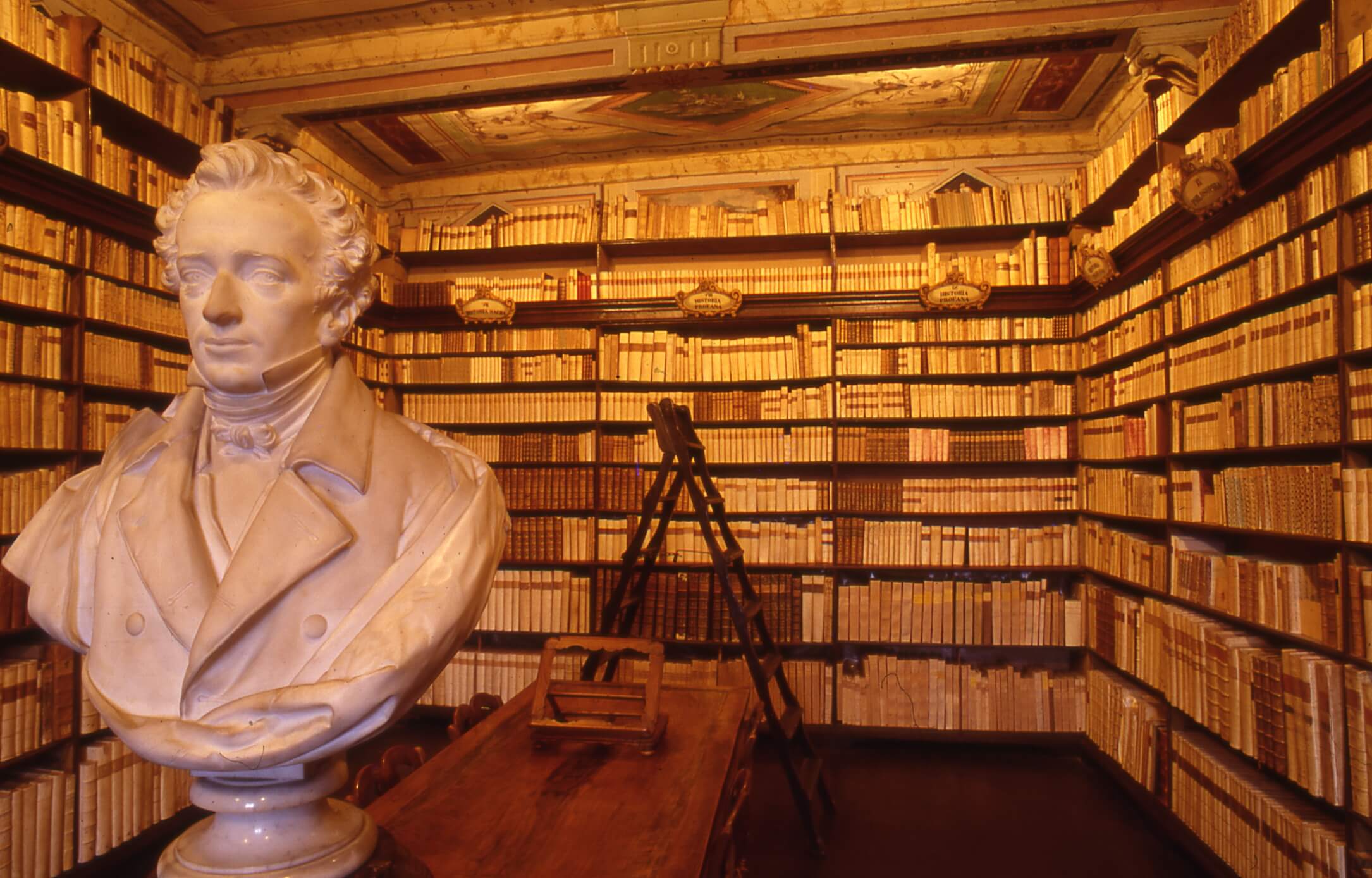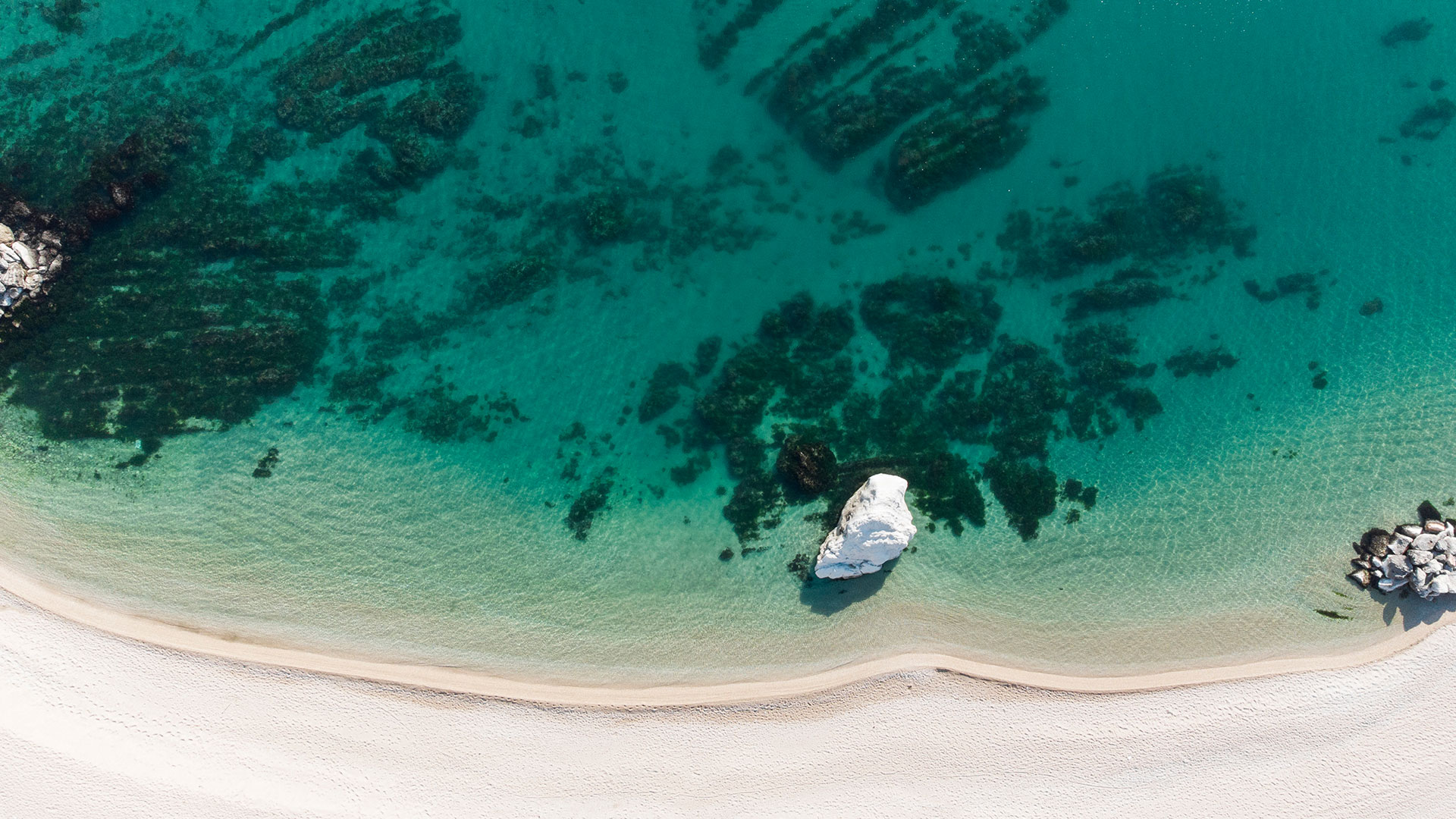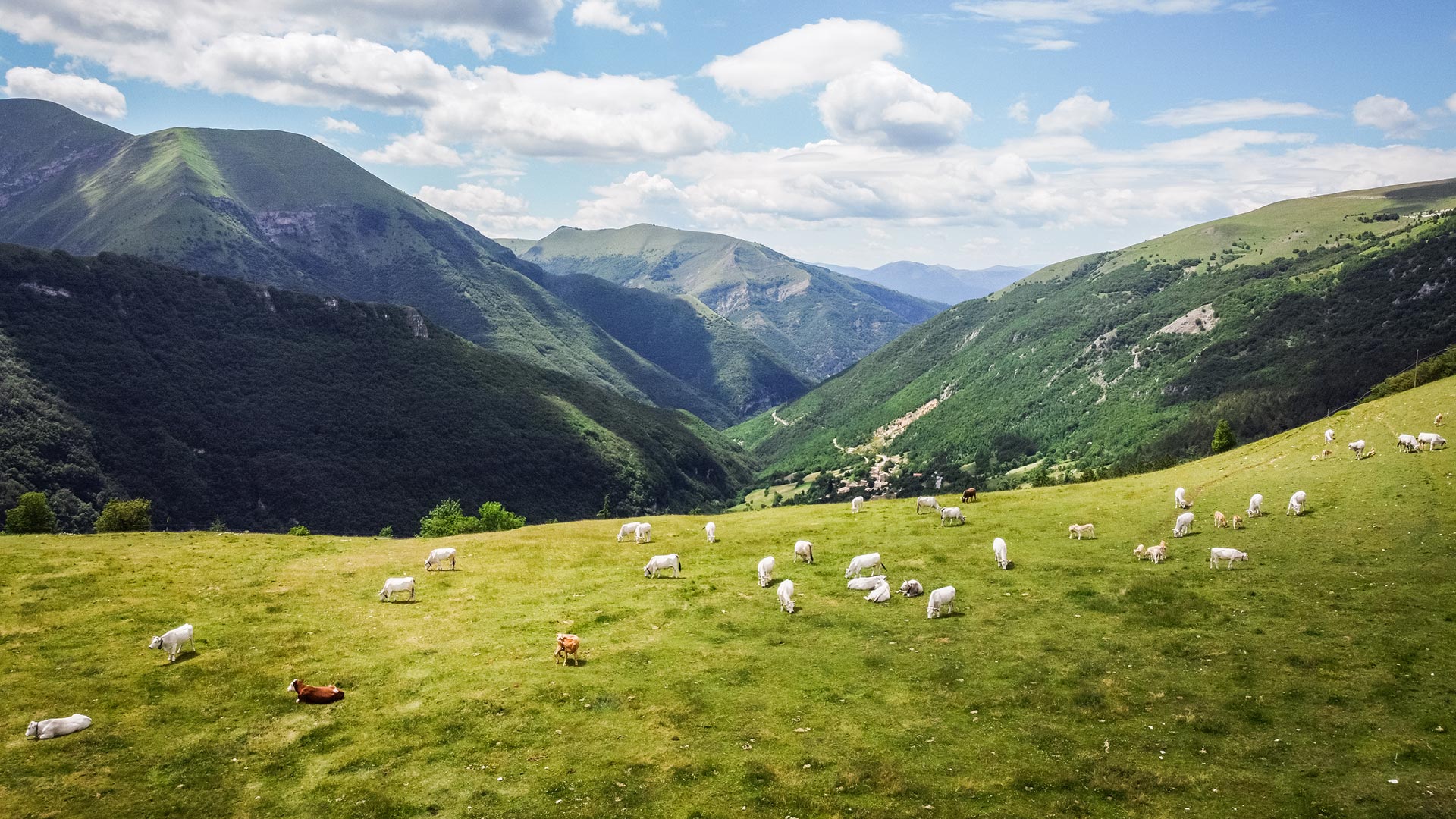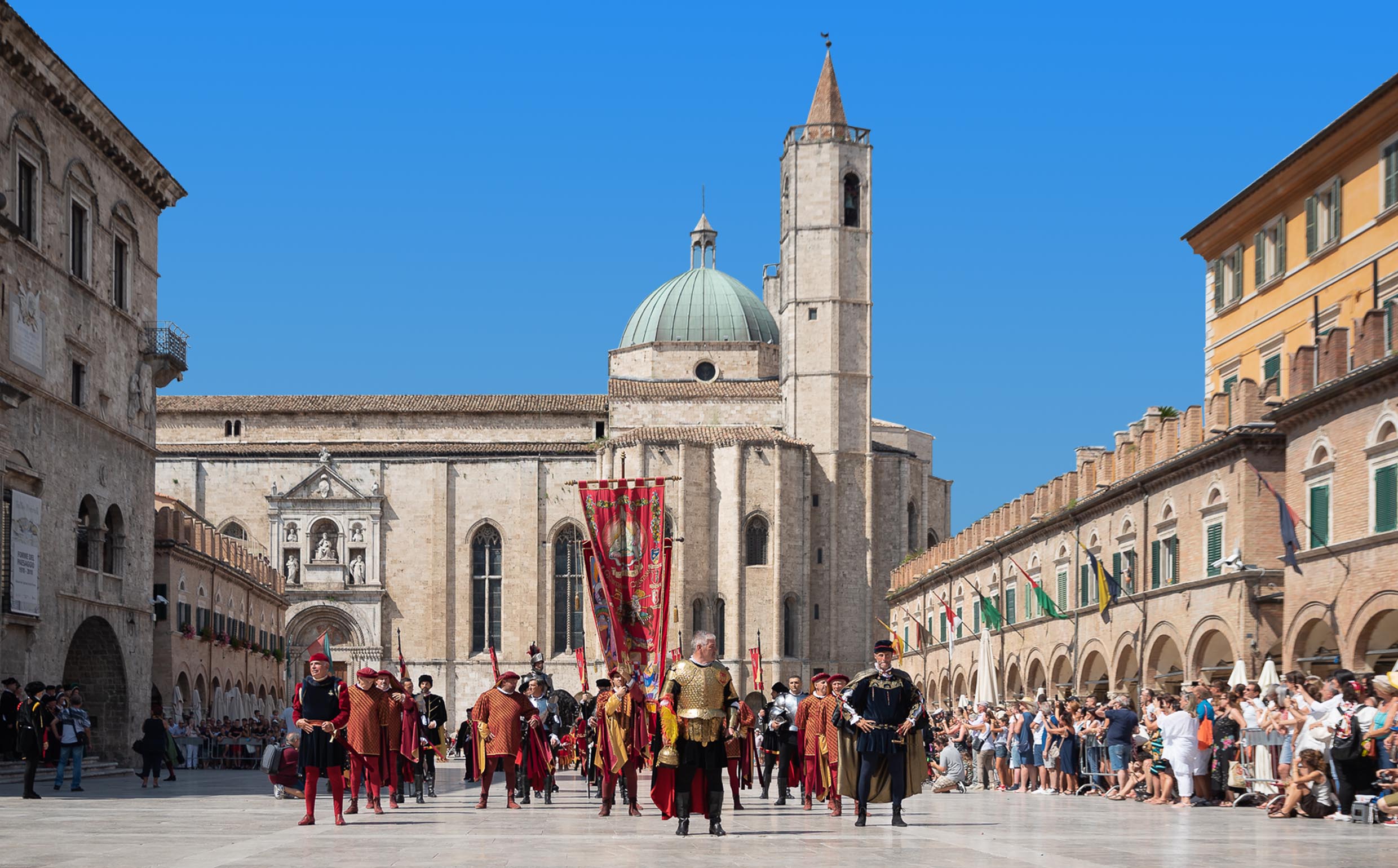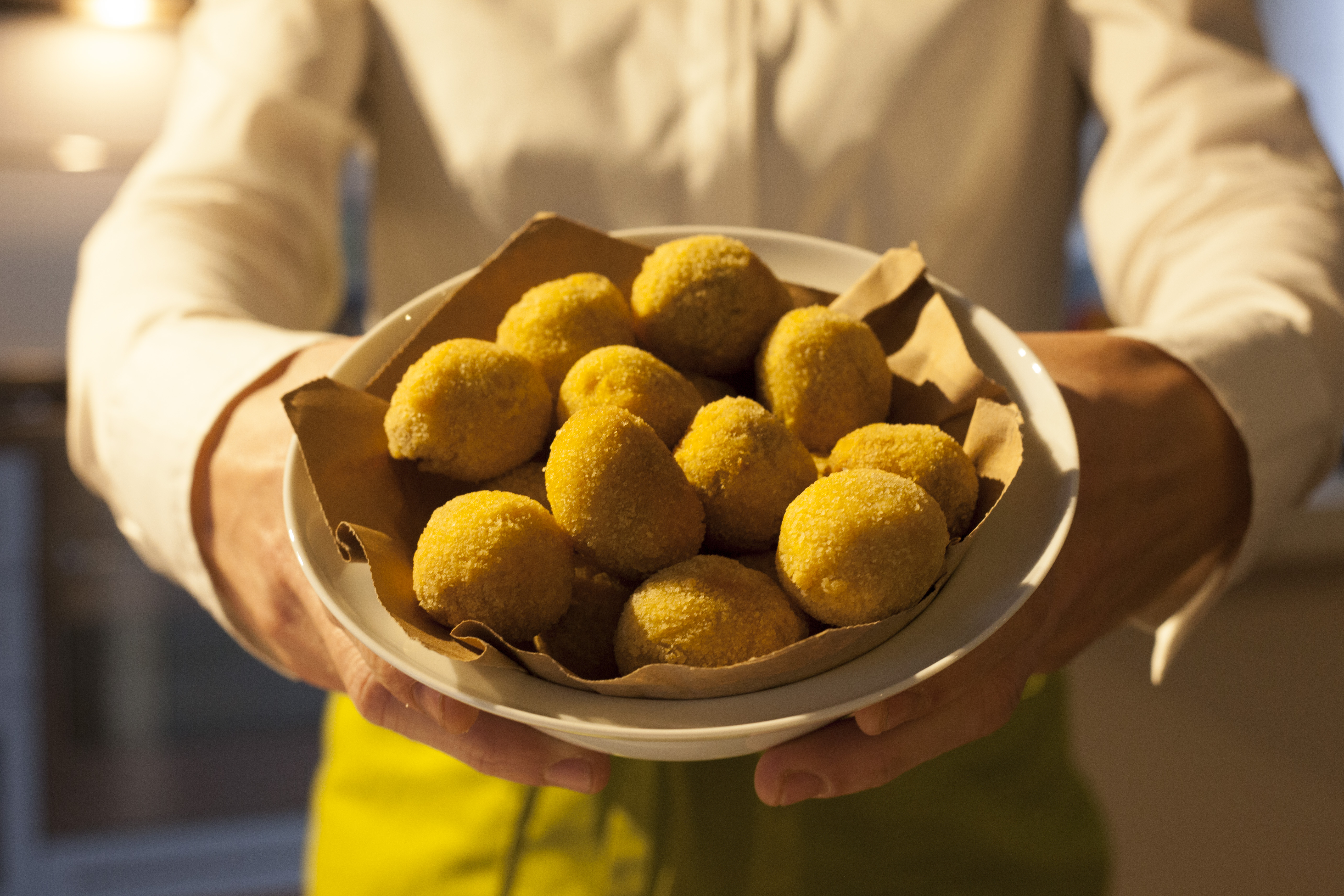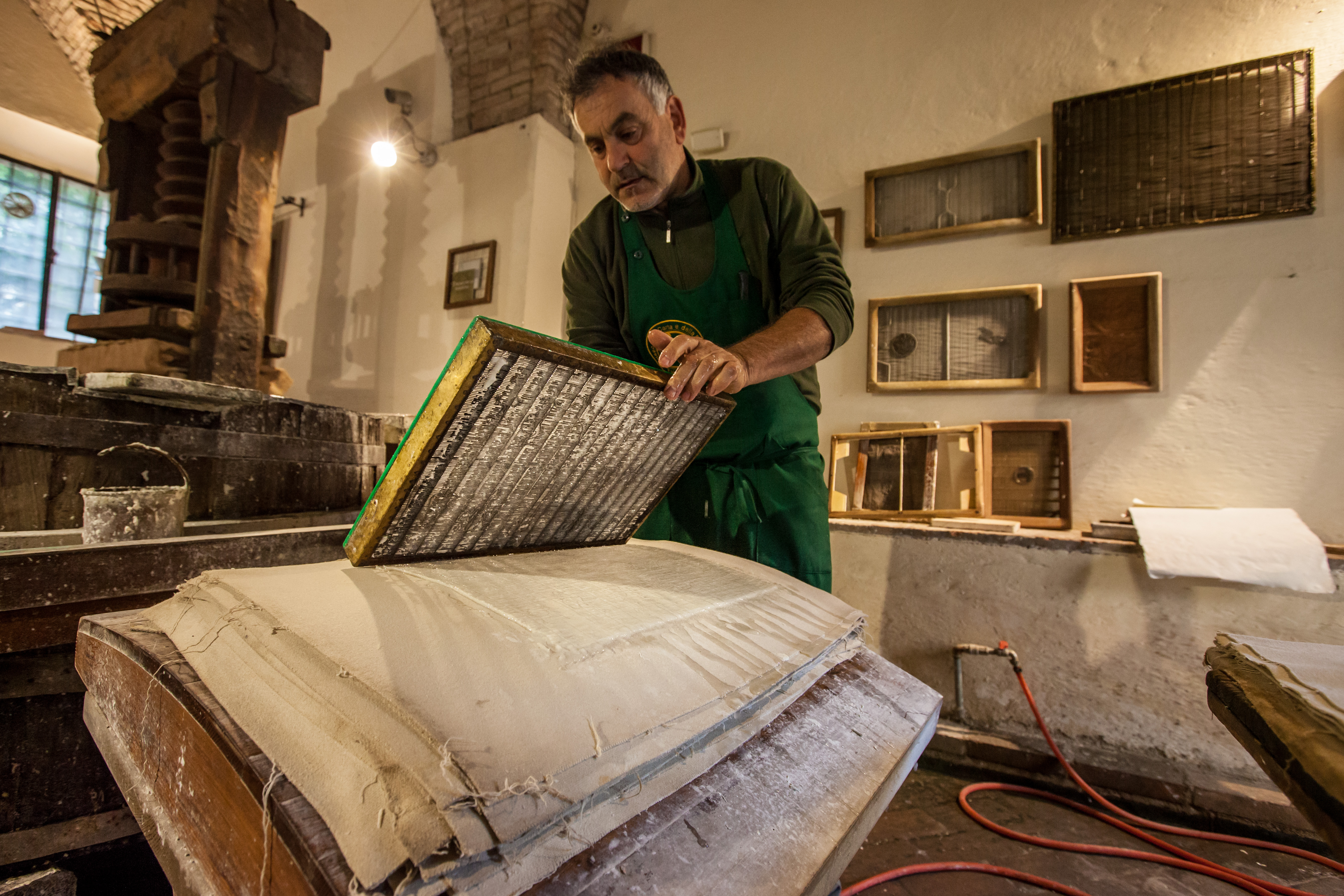Recanati, Giacomo Leopardi's birthplace - Marche Tourism
Back Recanati, Giacomo Leopardi's birthplace
Recanati, Giacomo Leopardi's birthplace
Recanati is a remarkably hill town, just inland from the Adriatic Sea. It is situated on a ridge between the valleys of the Potenza and the Musone rivers, with a wonderful view that stretches from the Sibillini Mountains to the Adriatic Sea. It's close to the heart of many Italians as the birthplace of one the country's greatest poets, Giacomo Leopardi (1798-1837). Around every corner, plaques mark spots referred to in his poems.
ATTRACTIONS: Palazzo Leopardi, at the southern edge of town, where he was born and brought up, holds memorabilia, manuscripts and his fascinating library, containing 20,000 volumes. Further places connected with Leopardi and his poems are: the square of "Il sabato del villagio", just in front of the eighteenth-century Palazzo Leopardi; the "House of Silvia; the "Hill of Infinity", the peak of Mount Tabor, which inspired the eponymous poem composed by the poet at 21, and now home to the Orto sul Colle dell'Infinito literary Park; the ancient vegetable garden of the monastery of the Poor Clares and the World Center of Poetry and Culture, the Leopardi National Studies Centre, the Tower of the "Passero Solitario", located in the courtyard of the cloister of Sant'Agostino, Palazzo Antici Mattei, Leopardi's mother birthplace. In 2014 the film " Il giovane favoloso", focusing on the life of the poet, was shot for most of the time in Recanati.
The most significant religious buildings are: the church and the convent of the Capuchin friars, dating back to 1600, the Church of Santa Maria Morello, where Giacomo Leopardi was baptized, the Church of San Vito, with its impressive facade designed by Vanvitelli, the Church of Sant'Agostino with its beautiful Istrian stone portal, the Church of San Domenico, housing the "San Vincenzo Ferrer" frescoed by Lorenzo Lotto, the Cathedral of San Flaviano, boasting a magnificent 17th century wood ceiling. In the delightful Piazza Leopardi you find the statue of Giacomo Leopardi and the neoclassical Town Hall, built at the end of the centenary of the birth of Giacomo Leopardi; the Torre del Borgo, built in the second half of the twelfth century as a symbol of the foundation of a single municipality, now reopened to the public. A nice example of fifteenth century architecture is Palazzo Venieri, built by Cardinal Venieri. Recanati is also the home town of the great tenor, Beniamino Gigli and the Museo Gigli in the historical Teatro Persiani holds a collection of his costumes from some 30 operas, a mock-up of his dressing-room and some of the many presents he received, including a walking stick from Verdi. The museum in Villa Colloredo-Mels, a splendid 18th century villa on the edge of the town centre, holds Recanati's greatest art treasure, a room with four of Lorenzo Lotto's finest pictures, including a most haunting Annunciation packed with almost breathless narrative detail - a high spot in any art-lover's tour of the central Marche.
The most typical specialties are the "piccicasanti", a kind of sticky soup, made with poultry, pork and extra virgin olive oil. Two delicious wines are: Rosso Piceno (red wine) and Colli Maceratesi (white wine). The most remarkable events taking place in Recanati during the year include: Lunaria, offering a series of concerts in July in the central Piazza Leopardi; "Amantica", boasting a summer program ( July) with traditional music; San Vito Festival, celebrating the the patron saint of Recanati, taking place on 15 June.




